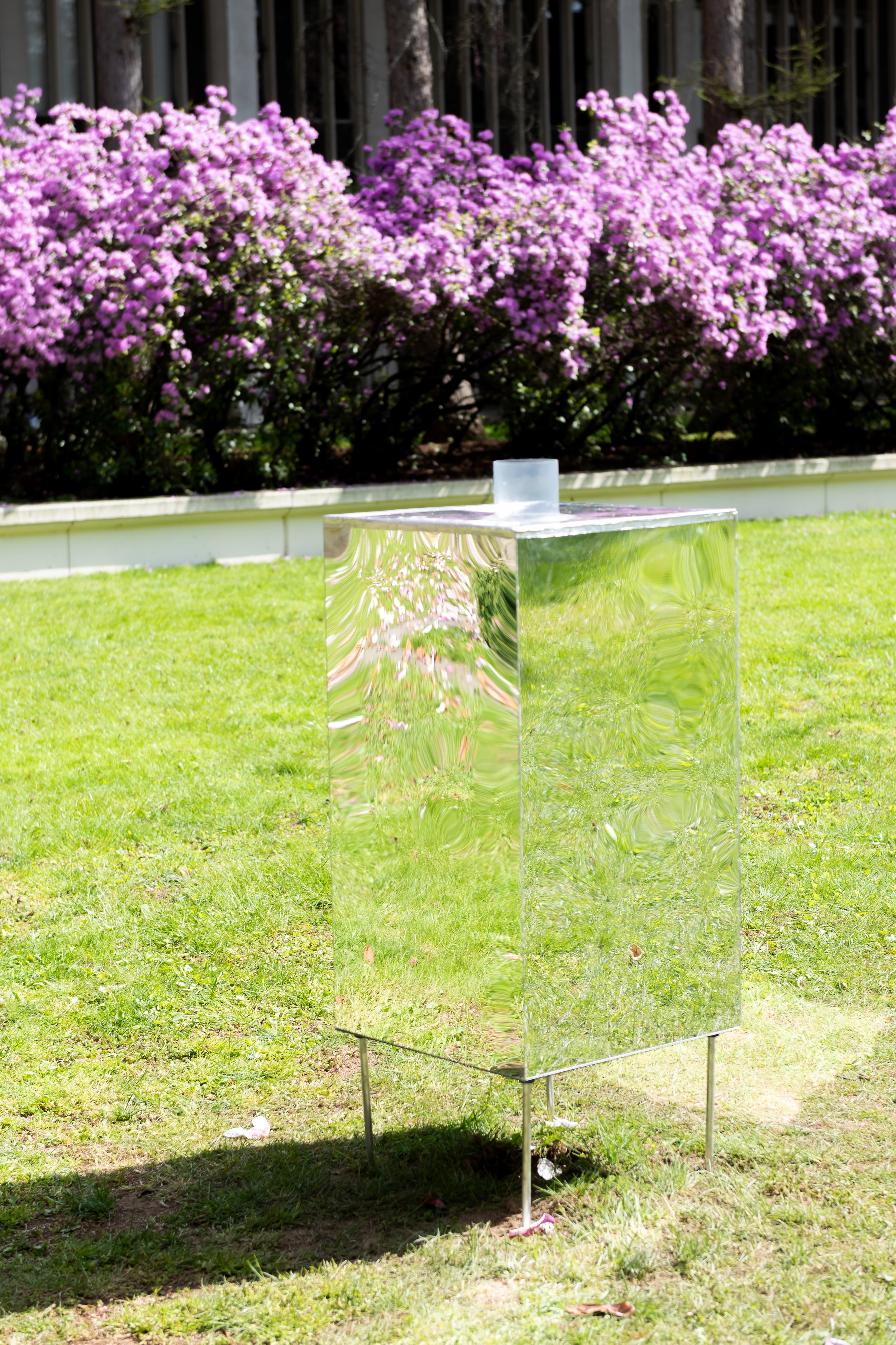
State University of New York at Albany, 2024








-
They are rectangular columns that stand three feet tall. The external surface is plexiglass mirror and the interior structure is composed of layers of clear, square plexiglass placed over one another and spaced inches apart. Etched into the surface of each plexiglass slide are alternating rows of designs: enlarged microscopic images of tears or detailed images of a magnetic field. Each slide has one to four words inscribed on the surface. The interior plays with dimension by creating an illusion of space through the use of layered plexiglass with each word of the sentence descending. The viewer is guided to extend their gaze through the entire space along each side to read the text. When read in total the four sides of the square communicate the phrase: “What do you want to say to it?” “Give it to the earth” “It can absorb it.” The top layer will have a different word for each sculpture, one being fear and the other being sadness. In addition to the etchings, there is a hole in the center of the interior and a clear plastic column placed inside that guides the viewer to look towards the earth. On one of the inner walls of the column, there is a system of LED lights illuminating the edge of the plexiglass slides allowing the viewer to see the text and design.
The phrase “Earth Can Absorb It” has a dual meaning that’s both spiritual and scientific. In 2023 the National Oceanic and Scientific Administration wrote an article entitled, The Earth-Atmosphere Energy Balance that states “...at the earth's surface - energy absorbed is balanced with the energy released. When this balance is disrupted, it can lead to changes in the Earth's climate.” [4] This work leans further into the idea of energy transference. facilitating a letting in and letting out, the action needed for internal emotional processing and potential transformation. Like humans, our planet needs a harmonious balance to sustain itself. The work also takes inspiration from traditional African spiritual practices, specifically speaking to the earth in ancestor veneration and in connecting with deities to seek guidance and protection. To be more specific the Black Women’s Healing Retreats states “The Dagara Tribe in West Africa often used spiritual practices such as communing with nature and using rituals to tap into the spiritual realm. The Yoruba practices encouraged prayers, spiritual dances, and connections with deities like Oshun and Ogun. Spirituality for black people has always been about connecting with the Earth.”